The city Córdoba is the regional capital of the Spanish province Córdoba. It has a long history, first as Roman city, which was first captured by Vandals, later by Visigoths, and in 755 by Moors. The next three centuries have been described as its "golden age." The Umayyad prince Abd al-Rahman I established the independent state of al-Andalus with Córdoba as its capital. The first stages of the Mezquita (the name means mosque) were begun during his reign (about 786) although extensive additions were made by later Caliphs. The Mezquita was built on the site of a former Visigothic church, which itself had been constructed on top of a Roman temple dedicated to Janus.The West exterior |
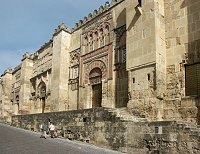
|
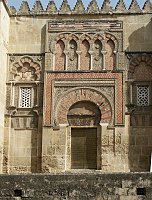
|
The plain exterior, with the exception of decorated portals which march down the side of the rectangular mosque, contrasts with the decorated interiors. These entrances and windows date from the time of al Mansur (914–1002), Moorish regent of Córdoba, known in Spanish as Almanzor. |
| |
|
Rich decoration with intersecting arches, floral arabesques, and complicated geometric and interlace patterns |
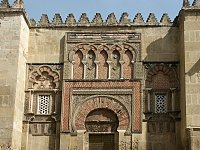
|
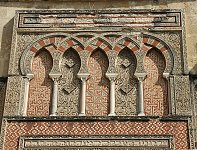
|
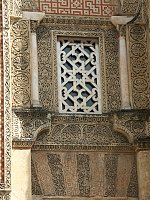
|
| |
|
Various artistic traditionsThe style has diverse sources: the horseshoe arches derive from Visigothic architecture and the floral decoration from both Roman and Persian traditions. These are combined with Islamic calligraphy and geometric patterns. |
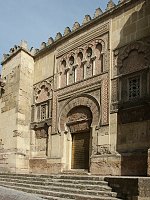
|
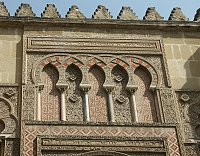
|
| |
|
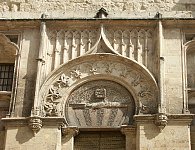
|
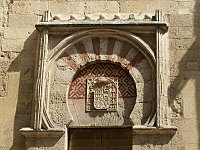
|
Two additional decorative portals from the west side |
| |
|
The Eastern side (in the shade) |
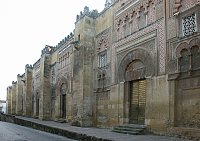
|

|
| |
|

|
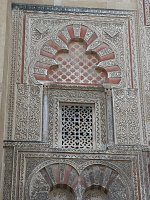
|
Multifoil arches--with 5 or seven lobesBelow the arches pierced stonework shutters the windows. |
| |
|
Geometric patternsBecause of the prescription against figurative images (which Moslems believe could lead to idolatry), artists developed complex and intricate geometric patterns. |

|
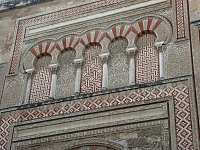
|


 Click here to return to index of art historical sites.
Click here to return to index of art historical sites.
 Click here to return to index of artists and architects.
Click here to return to index of artists and architects.
 Click here to return to chronological index.
Click here to return to chronological index.
 Click here to see the home page of Bluffton University.
Click here to see the home page of Bluffton University.
